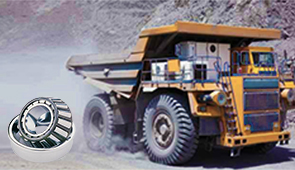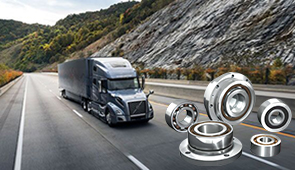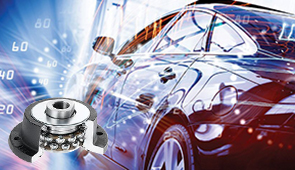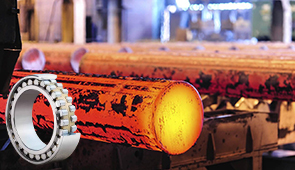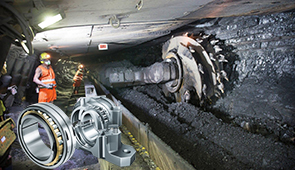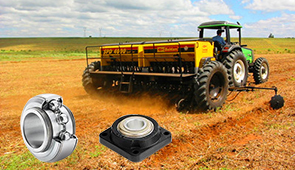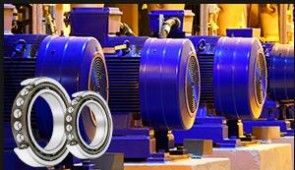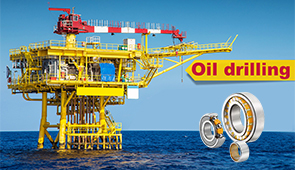Sealed vs Shielded Bearings: Choosing the Right Protection for Your Application
When it comes to bearing performance and longevity, choosing the right type of protection for your specific application is critical. Bearings are vital components in countless mechanical systems, and their ability to operate efficiently under varying conditions depends largely on how well they are protected from contaminants, debris, and moisture. This is where sealed and shielded bearings come into play. But which option is right for your needs? In this article, we’ll explore the differences between sealed and shielded bearings, examine their unique advantages, and help you make an informed decision based on your application’s requirements. Whether you’re dealing with harsh environments or aiming for performance optimization, understanding these protection mechanisms is essential for ensuring system reliability and minimizing downtime.
What is the Difference Between a Seal and a Shield?
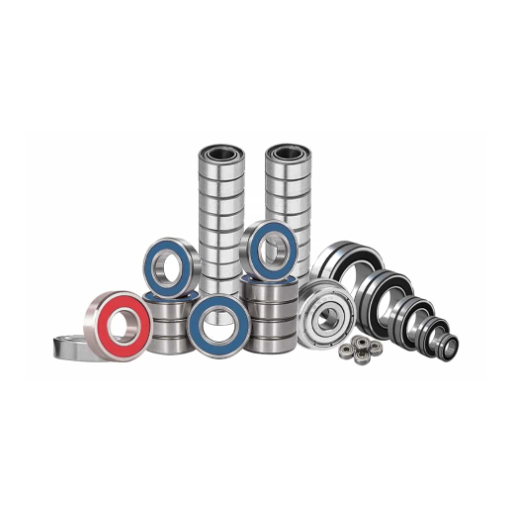
Understanding Seals and Shields in Bearings
Seals and shields in bearings have the crucial role of maintaining internal lubrication while preventing contaminants from penetrating. While both seals and shields serve the same function, they have different methods of operation and are designed for specific use cases that depend on the degree of protection needed and operating conditions.
A seal is used to block off contamination from dirt, dust, and water. Seals are made of rubber or some other synthetic material that compresses against the inner and outer rings. This construction provides a robust seal against external factors. This type of seal works best in situations where contamination is a great concern, like heavy industrial machines working in very dirty or moist environments. On the other hand, this tight seal could result in quite a bit of friction, which increases energy consumption.
A shield, unlike a seal, does not form a complete seal and works as a physical barrier. A shield, which is usually made of metal, is attached to the bearing’s outer ring and extends close to the inner ring without touching it. This design provides some protection from contaminants while allowing lower friction and higher speeds. Shields are used in applications where protection is required, but high-speed operation is critical, like electric motors or fans. Understanding these functions helps engineers and technicians choose the most appropriate bearing type and maximize system efficiency and lifetime.
How Do Metal Seals and Rubber Seals Function?
Rubber and metal seals are crucial parts of equipment because they stop harmful particles such as dust, dirt, and moisture from entering while keeping lubricants sealed inside. Each type has its unique benefits and is selected depending on the application’s operating conditions. They mainly aim to maintain optimal performance and avoid unnecessary wear or damage to vital components.
Constructed from strong materials such as stainless steel or aluminum, metal seals are robust and reliable when used in extreme temperatures, aggressive chemical environments, or any fluctuations in pressure. These types of seals are used in situations where long-term effectiveness is important, for example, aerospace, automotive, or industrial machinery. Though useful in many applications, metal seals do have some downsides due to their rigidity, which prevents them from accommodating significant misalignments or surface irregularities.
Conversely, rubber seals are made of elastomers such as Nitrile, EPDM, or Viton, which are more flexible. They are better at forming tight barriers in systems that experience vibration, slight misalignments, or moderate temperature ranges. Rubber seals are used in hydraulic systems and pumps, and automotive parts because of their durability and flexibility. Although they tend to perish more quickly than metal seals in extreme chemical or temperature conditions, rubber seals are cheaper, easier to install, and more practical for many other uses.
Comparing Contact and Non-Contact Seals
Contact seals balance friction and wear while providing excellent sealing, whereas non-contact seals reduce friction and increase lifespan at the cost of sealing efficiency.
|
Aspect |
Contact Seal |
Non-Contact Seal |
|---|---|---|
|
Friction Level |
High |
Low |
|
Seal Strength |
Excellent |
Moderate |
|
Durability |
Lower |
Higher |
|
Speed Range |
Limited |
Broad |
|
Use Cases |
Clean, low-speed |
High-speed, abrasive |
|
Heat Output |
High |
Low |
|
Lifespan |
Shorter |
Longer |
How Do Bearing Seals and Shields Affect Performance?
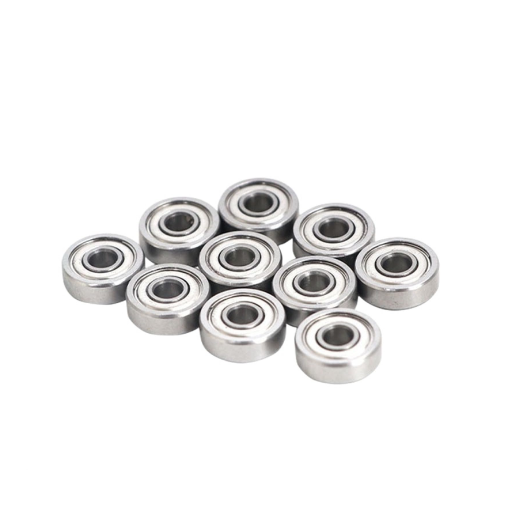
Impact on Friction and Lubrication
The interplay between seals and lubrication systems is critical for determining system efficiency and mechanical component lifecycle. Well-made bearing seals and shields will better control friction and lubrication retention, influencing the system performance in various working conditions. Below are five key impacts of bearing seals and shields on friction and lubrication, along with detailed descriptions:
- Reduction in Friction Levels: Seals and shields are designed to eliminate unwanted engagement with bearings from extraneous elements and form a barrier. For example, non-contact seals will incur very low friction but will allow a small amount of debris intrusion. On the other hand, contact seals will incur higher friction due to surface contact, but better exclude contaminants.
- Lubricant Retention: High-performance seals will retain the lubricants and prevent leakage, which ensures proper lubrication of the parts within the bearing assembly. This is vital for high-speed applications because centrifugal force can easily lead to lubricant displacement in the absence of effective sealing.
- Prevention of Contaminant Intrusion: As mentioned earlier, seals and shields protect the lubricant from dust, dirt, and moisture. These contaminants can mix with the lubricants and form abrasive materials that increase the rate of bearing wear and reduce operational efficiency.
- Temperature Management: The seals can create friction, which can impact the working temperature of the bearing assembly. Poorly designed seals tend to overheat, which causes breakdown of lubricants and reduces the lifespan of the bearing.
- Compatibility with Lubricant Types: To avoid any form of chemical degradation, the seal must be compatible with the lubricant used. Elastomer seals can degrade due to high temperatures and aggressive oils, while metal shields as seals are better because they have greater chemical and thermal stability, though they may lack flexibility.
With all of these components in mind, the performance of bearing seals requires attention and precision in design and selection so they can work effectively in different industrial settings and operational conditions.
Preventing Contamination in Shielded and Sealed Bearings
In order to reduce shielded and sealed bearing contamination, numerous methods are required simultaneously, which align with the operations and needs of the application. As an example, it starts from the selection of an appropriate shielding or sealing design. Contact seals are better at keeping fine particles of debris and liquids out. However, energy expenditure and friction may increase. Non-contact seals are better at minimizing friction, but smaller contaminants can pass through. These trade-offs need to be balanced with the operating speed, temperature, and environmental exposure of the bearing system.
In second place, stick to cleaning and lubrication policies that are created as a result of bearing life standards. With dirt, water, and chemical dust, poorly maintained seals lead to bearing wear, corrosion, and failure. Barriers against contaminants can be improved through inspection and monitoring of seals for wear and damage, and effective lubrication schedules can be put in place.
Finally, contamination prevention is bolstered by system design. Labyrinth seals, protective covers, or positive air pressure systems offer additional bearing protection in extreme environments. Also, observance of proper installation and alignment of bearing assemblies minimizes ingress pathways due to mechanical gaps or distorted components.
With these steps and constant vigilance for strange conditions, shielded and sealed bearings will perform reliably and last a long time even in tough industrial places.
Optimizing Bearing Life with Proper Seal Selection
Choosing the right bearing seals is important for maintaining the effectiveness and minimizing premature wear in industrial systems. Both the design and material components of a seal need to align with the operating environment, which includes temperature range, degree of contamination, rotational speed, and load pressures. For instance, in high-temperature environments, seals made from fluorocarbons (FKM) elastomers offer high-temperature thermal resistance, while labyrinth or contact seals work well in higher contaminant environments due to particulate ingress.
Performance features of sealing technologies have been enhanced with modern advancements. With the use of dual-lip seals with optimized geometries, frictional losses along with protective capabilities can be balanced, which leads to the extension of bearing service intervals. Moreover, advanced lubricants or coated seals can be used to minimize friction, heat generation, and surface wear at contact surfaces, which improves system reliability.
In seal selection, analyzing the lubricant compatibility for the bearing assembly is equally important. Some seal materials lose their effectiveness over time due to chemical attack from certain lubricants; therefore, protecting materials needs scrutiny.
In summary, using the right seal and monitoring a bearing’s condition with vibration analysis and thermal imaging will develop a complete plan to extend a bearing’s life. Performance can be improved by reducing downtime and increasing the life of essential machinery parts with the integration of these technologies and data-driven preventive maintenance.
When to Use a Sealed Ball Bearing?
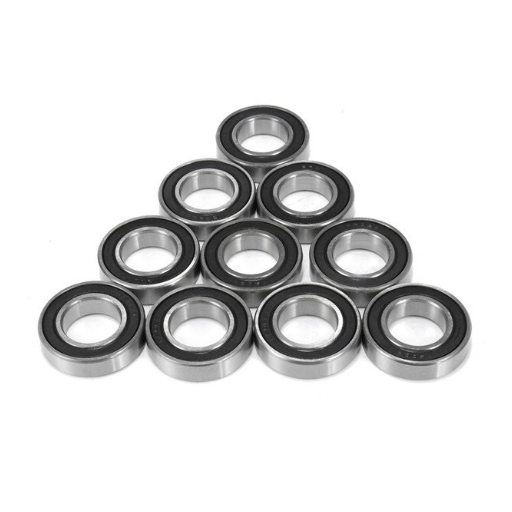
Applications for Sealed Bearings in Electric Motors
Sealed ball bearings have become indispensable in a variety of industries that incorporate electric motor systems due to their dependable functionality and reduced maintenance in demanding situations. Below is an application-specific summary of five areas where sealed ball bearings have become vital:
- Industrial Pumps: The use of electric motors in industrial pumps is common and allows for sealed bearings to be integrated. Electric motors utilized in industrial pumps have to operate in environments exposed to water, chemicals, and particulates, making them prone to contamination. Their integral seals make sure liquid and solid matter do not penetrate, thus ensuring dependable operation.
- HVAC Systems: Functions performed by electric motors in heating, ventilation, and air conditioning (HVAC) systems are usually continuous and demanding. HVAC systems have continous operation conditions, which makes sealed ball bearings advantageous due to extra protection from moisture and dust, enhancing their service life.
- Conveyor Systems: Conveyor systems in food processing industries are susceptible to contamination and require sealed bearings that prevent debris and cleaning solutions from penetrating while maintaining hygienic conditions. These sealed bearings also maintain intervals for lubrication, which reduces the need for constant maintenance.
- Power Tools: Portable electric power tools require minimal maintenance and depend on sealed bearings for supporting performance. Sealed bearings ensure that a dusty work environment does not affect the tool’s performance, thus reducing wear over time.
- Electric Generators: Sealed ball bearings increase the efficiency of electric motors by reducing friction, which improves the microwave oven’s efficiency. The motors also tend to last longer because the bearings help to protect the motors from external factors such as dust, water, and other harsh environmental elements.
The overall performance of electric motors is improved as a result of the durability and reliability, along with the reduced thermal stress experienced from sealed bearings.
Benefits of Sealed Bearings in Harsh Environments
- Enhanced Contaminant Protection
The sealed bearing’s construction helps to prevent the entrance of contaminants like dust, dirt, and moisture, which are common in rugged working environments. This form of protection is critical in avoiding abrasive wear and corrosion, ensuring dependable performance and reducing the chances of failure. Research shows that contaminant ingress contributes to about 25% of bearing failures in industrial settings.
- Improved Lubrication Retention
The bearing’s sealing structure helps to retain lubricants, ensuring an effective lubrication film is maintained even under extreme operating conditions. This helps reduce friction and improves energy efficiency while also increasing the durability of the bearing. Proper lubricant retention can also increase maintenance intervals significantly, reducing operational downtime by 40%.
- Resistance to Extreme Temperatures
With the use of advanced sealing materials, sealed bearings can withstand extreme ranges of temperatures, from sub-zero to high-heat regions of industries and energy sectors. Withstanding such thermal variations helps prevent seal damage and guarantees operation devoid of restrictions in harsh environments.
- Vibration and Shock Absorption
Sealed bearings help in dampening the impact of shocks, vibrations, and heavy machinery movements in rough terrain. This helps achieve smoother operations, which safeguards the sealed bearing and the machine’s overall performance.
- Lower Maintenance Costs
Sealed bearings enhance shielding and improve reliability, which decreases the frequency of maintenance interventions. This cuts operational costs, minimizes machinery downtime, and helps facilities operate more smoothly. Facilities that have switched to using sealed bearings report a reduction in overall maintenance costs of as much as 30%.
Choosing Between Sealed or Shielded Bearings for Wheel Bearings
Understanding the operational conditions that dictate the selection of sealed versus shielded bearings for wheels is crucial for seamless machine operation. The environment and maintenance accessibility are other key factors to consider while selecting the machinery. The construction of sealed bearings ensures that no contaminants, dirt, moisture, or dust can seep through the bearing, making it ideal for harsh environments or areas with high levels of contamination. Additionally, sealed bearings come pre-filled with lubricants, which extends the time between maintenance intervals while supporting the life of the bearing, thus lowering the overall cost.
The shielded bearing offers more protection than open bearings but less than sealed bearings. This makes them well-suited for moderate exposure to contamination. This type of bearing, in comparison to sealed ones, provides better performance in environments where there is high operational heat, although they are not as resistant to fine particles or liquid ingress. Depending on the load conditions, these types of bearings might require periodic re-lubrication to function optimally.
Recent insights from the industry suggest that the selection of these two designs should be based on the application. For instance, off-road vehicles and industrial equipment operating in dusty or wet environments often prefer sealed bearings. On the other hand, shielded bearings may perform better in precision systems or automotive applications where regulation of heat is more critical. Using the correct bearing type improves not only the performance of the wheel but also the entire machinery’s life and reliability.
How to Choose Between Seals and Shields for Your Bearings?
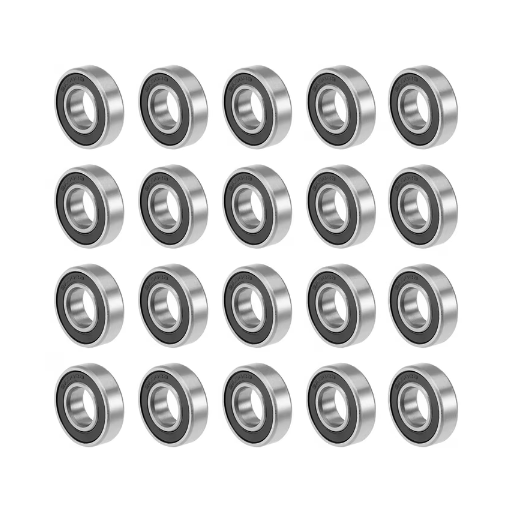
Factors to Consider: Application and Environment
Definitely, with regards to both sealed and shielded bearings, I always begin by checking the application first. Factors such as dirt, moisture, and other possible work debris matter a lot. Also, in the case of environments that often have high moisture content, I prefer sealed bearings. They are better at preventing moisture contact with the internal machine components. The outer vacuum adds extra protection against dirt, water, and debris. Agriculture, construction, and marine works are industries where sealed bearings have a greater impact.
Aside from that, temperature and heat dissipation are also critical as I evaluate the system as a whole. Based on my experience, automotive systems or instruments that function under precise temperature control benefit from shielded bearings. Operating under unregulated high temperatures or heating densely packed environments, inability to control airflow in a structure, or simple air circulation are issues no instrument wants to withstand. Addressing thermal issues safeguards the working environment and increases the lifespan of the bearing and machinery integrated.
Finally, maintenance and business efficiency are especially important to me. Sealed bearings need no maintenance because they are self-lubricating, and their grease is well-protected. They are very useful in situations where maintenance is hard to perform. In other cases, shielded bearings may allow re-lubrication with easier access, striking a better balance between efficiency and maintenance. With these considerations in mind, I can choose the most suitable bearing type with full confidence.
Understanding the Importance of Bearing Seals
Bearing seals serve a very critical function of keeping the internal components of a bearing safe from harmful dirt, dust, and moisture. These contaminants can significantly damage the performance and longevity of the bearing. Bearing seals act as protective barriers, not allowing any alien particles to enter while at the same time, keeping the lubricant within the bearing. Seals can come in many designs and material compositions, which account for different application requirements. These include non-contact seals, contact seals, and labyrinth seals.
Non-contact seals are ideal for high-speed operations as they generate minimal friction and heat. For environments with high contamination risks, contact seals are much better as they create tighter seals. Another type of seal is known as a labyrinth seal. These seals offer great protection while also reducing friction. They do so by using a complex passage to block contaminant entry without any direct contact, thus providing the best of both worlds.
Other types of materials, such as nitrile rubber (NBR), polytetrafluoroethylene (PTFE), and fluoroelastomers, have been recently introduced. These materials are chosen for specific operating conditions like temperature, chemical resistance, and load capacity. These new materials have been recently created due to advancements in sealing technology. Choosing the right seal not only increases bearing efficiency but also minimizes downtime caused by premature failure. This ultimately optimizes the performance of the entire system.
What Are the Types of Bearing Seals and Shields?
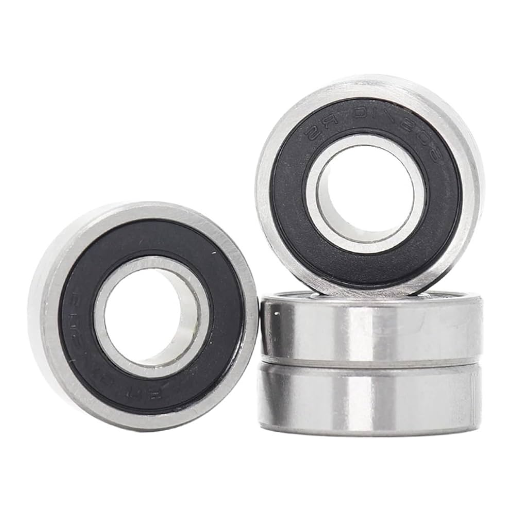
Exploring Metal Shield and Rubber Seal Options
- Metal Shields: Metal shields, or metallic covers and plates, are made of tough materials such as stainless steel and aluminum that can withstand high-speed and low-friction environments. These types of shields are usually pressed into the bearing’s outer race and act as a barrier against larger debris and particulates. Metal shields do not provide a complete seal due to their shape. They are best suited for clean environments, and where low drag and low torque are crucial requirements. These metal shields are widely used in the automotive and machinery industries because they support high-speed operations and consistent performance.
- Rubber Seals: Unlike other sealing methods, rubber seals are more comprehensive sealing solutions. The rubber seals are made from synthetic elastomers like nitrile butadiene rubber (NBR) or fluoroelastomers (FKM), which give them great flexibility and resilience. They are designed to provide more efficient sealing through rubbing contact with the inner race of the bearing, which aids in better retention of lubrication while blocking contaminants more efficiently than metal shields. Rubber seals are ideal for extreme conditions where moisture, dust, or chemical compounds that damage bearing functions are present. Their use in agricultural equipment, marine systems, and heavy-duty industrial machinery showcases the importance of rubber seals in providing enhanced protection.
Both options present distinct advantages, and choosing the right one will depend on the application requirements, such as environmental factors, operating speed, maintenance schedule, and other considerations.
Specialty Seals like Labyrinth Seals and Their Uses
Labyrinth seals are a complex form of mechanical seal meant to restrict the escape of fluids or gases without direct contact between rotating parts and stationary parts. Unlike traditional seals, labyrinth seals have a series of interlocking ridges that form a complex and winding pathway for fluid flow, which may help turn flows within it, restricting the leakage through turbulence and resistance. These types of seals are particularly useful in places where there is a need for Protection from unwanted materials and Dependability.
Labyrinth seals are prominent in high-speed turbines, compressors, pumps, and jet engines, where the sealing system has to withstand severe increases in rotation and temperature. The no-contact design helps reduce frictional wear, extend maintenance intervals, and increase operational life. In addition, labyrinth seals are used for environments with particle-laden air; the complex path shields exposed machinery from contamination.
In recent years, new technologies in materials and manufacturing techniques have improved the effectiveness of labyrinth seals even further. Their use in modern high-performance applications is now possible because of advanced polymers, plasma coating technologies, and new high-performance alloys, which have improved thermal resistance and structural integrity. Furthermore, the design of seals has been improved with the inclusion of CFD (Computational Fluid Dynamics) simulations into the design process, which allows engineers to optimize geometries for specific industrial application conditions. With these developments, labyrinth seals are now an indispensable aid for industries with complex requirements and extreme efficiency sealing systems.
Frequently Asked Questions (FAQ)
Q: What is the difference between sealed and shielded bearings?
A: The main difference between sealed and shielded bearings is the level of protection they provide. Sealed bearings have rubber seals on both sides, which offer better protection against contaminants such as dust particles and metal particles. Shielded bearings have a metal shield that provides a barrier but does not make contact with the inner ring, offering less protection compared to contact seals.
Q: When should sealed bearings be used?
A: Sealed bearings are used in environments where there are higher levels of contaminants and moisture. The rubber seals prevent contaminants from entering the bearing, ensuring proper lubrication levels and longer service life. They are ideal for applications where better protection is required.
Q: What are the benefits of using shielded bearings?
A: Shielded bearings are beneficial in applications where there is less exposure to contaminants. They provide a barrier against larger particles while allowing for easier maintenance and inspection. They are often used in environments with low levels of impurities.
Q: How do rubber seals on both sides improve bearing performance?
A: Rubber seals on both sides of the bearing provide an enclosure that prevents contaminants such as dust and finer particles from entering the bearing. This helps maintain proper lubrication levels and prevents premature wear, enhancing the bearing’s performance and lifespan.
Q: What role does the lip of the seal play in sealed bearings?
A: The lip of the seal in sealed bearings is designed to make contact with the bearing inner ring. This contact helps create a tight barrier that prevents contaminants and moisture from entering the bearing, providing better protection compared to non-contact seals.
Q: Why are contact seals preferred over shielded bearings in certain applications?
A: Contact seals provide a higher level of protection against contaminants entering the bearing. They are preferred in applications where the presence of dust, moisture, or impurities could compromise bearing performance, as they ensure a more effective seal compared to shielded bearings.
Q: Can sealed bearings handle high-speed applications?
A: Sealed bearings can handle high-speed applications, but it’s important to choose the right seal type for the specific application. Rubber contact seals may cause more friction, so it’s crucial to consult bearing manufacturers for recommendations on seal types suitable for high-speed conditions.
Q: How do sealed bearings help in preventing bearing surfaces from damage?
A: Sealed bearings help in preventing damage to bearing surfaces by keeping contaminants and moisture out. The seals maintain a clean environment inside the bearing, reducing the risk of abrasive wear and corrosion, thus prolonging the bearing’s operational life.
Q: Are there any drawbacks to using sealed bearings?
A: While sealed bearings offer better protection against contaminants, they may introduce additional friction due to the contact between the seal and the inner ring. In some cases, this can lead to increased heat generation, which might not be suitable for all applications.
UCTH213-40J-300 with Setscrew(inch)
CNSORDERNO: Normal-duty(2)
TOGN: UCTH213-40J-300
SDI: B-R1/8
SD: 2 1/2
UCTH212-39J-300 with Setscrew(inch)
CNSORDERNO: Normal-duty(2)
TOGN: UCTH212-39J-300
SDI: B-R1/8
SD: 2 7/16
UCTH212-38J-300 with Setscrew(inch)
CNSORDERNO: Normal-duty(2)
TOGN: UCTH212-38J-300
SDI: B-R1/8
SD: 2 3/8
UCTH212-36J-300 with Setscrew(inch)
CNSORDERNO: Normal-duty(2)
TOGN: UCTH212-36J-300
SDI: B-R1/8
SD: 2 1/4
UCTH211-35J-300 with Setscrew(inch)
CNSORDERNO: Normal-duty(2)
TOGN: UCTH211-35J-300
SDI: B-R1/8
SD: 2 3/16
UCTH211-34J-300 with Setscrew(inch)
CNSORDERNO: Normal-duty(2)
TOGN: UCTH211-34J-300
SDI: B-R1/8
SD: 2 1/8









